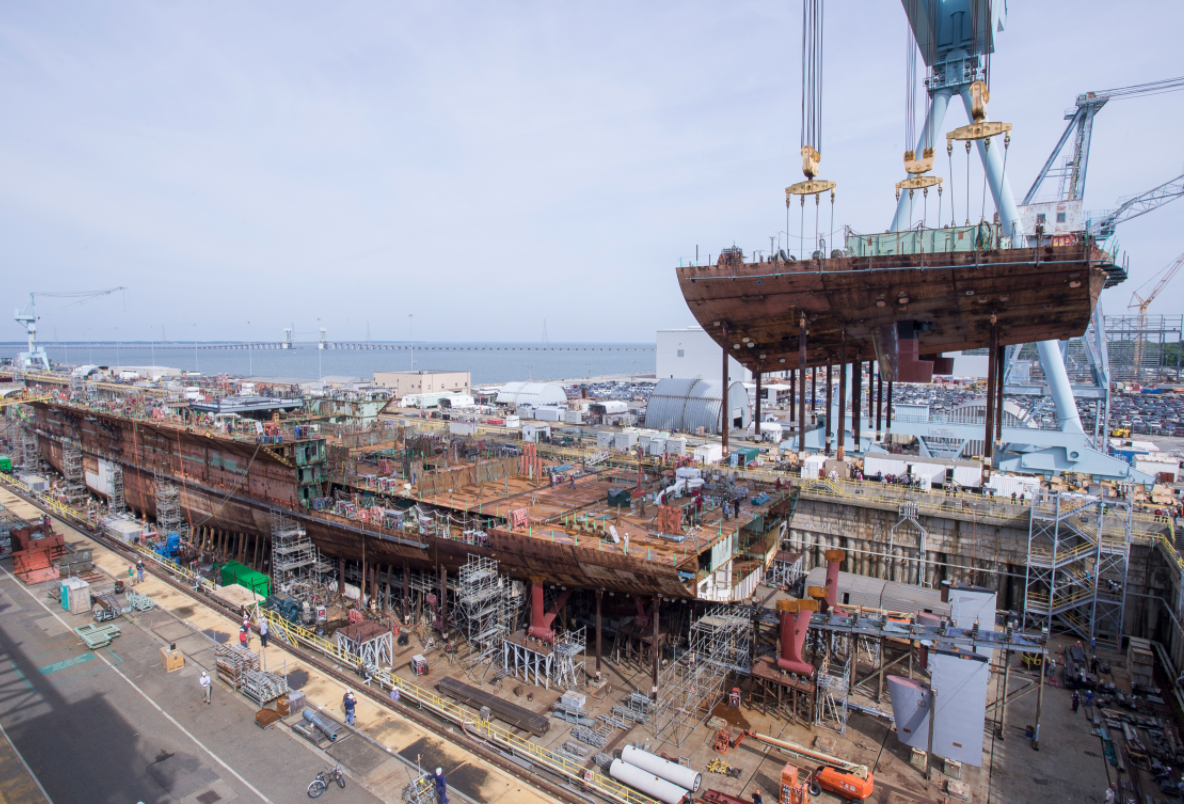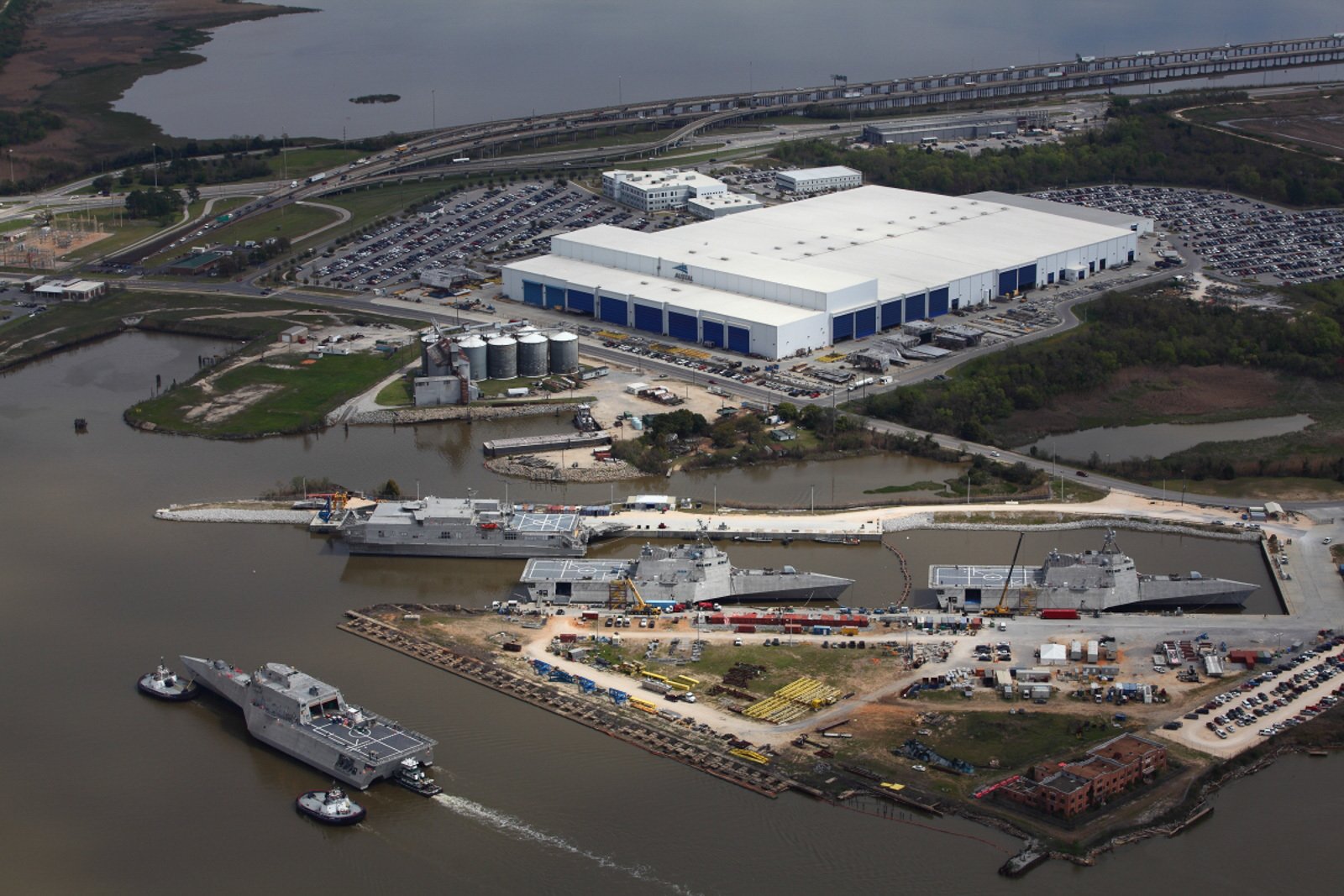
The Senate Armed Services Committee is looking for more information from the Navy before it will support buying additional ships in Fiscal Year 2019, which its House counterparts wholeheartedly endorsed doing.
The Navy requested 10 ships in its FY 2019 request. The House Armed Services Committee earlier this month added the authority to buy three more – two Littoral Combat Ships and an aircraft carrier – and paved the way for additional ships in the Future Years Defense Program.
The Senate committee is taking a more measured approach in its version of the bill, which the committee marked up this week and will be filed with the full Senate for a floor debate and vote after the Memorial Day holiday. SASC’s bill, according to a bill summary, supports only the 10 ships the Navy requested, as well as some additional advance procurement and long lead-time material funding beyond the budget request.
Speaking to reporters on background today, SASC staffers said the committee wanted to better understand the current status of the aircraft carrier and LCS programs before supporting any spending beyond the Navy’s formal 2019 budget request.
On the LCS program, of which SASC Chairman Sen. John McCain (R-Ariz.) has been among the most vocal critics, the House sided with industry and added two ships to the Navy’s request for one LCS – totaling three ships for FY 2019. During last year’s budget talks, the Navy said buying three ships was the minimum sustaining rate for industry. Both shipyards in the LCS program are competing for the follow-on guided-missile frigate program and maintain that anything less than three LCSs a year before the downselect will hurt their workforce and suppliers and put them at a disadvantage for the frigate competition.
McCain’s longstanding LCS concerns aside, a SASC staffer noted that the Navy, by the end of the current fiscal year, FY 2018, will have bought 32 LCSs, which is the current total program of record. The staffer said the committee is interested in moving on to the more capable frigate instead of funding more LCSs. As a compromise for 2019, the committee included language that will require the Under Secretary of Defense for Acquisition and Sustainment to certify three things before any LCSs could be bought: one, that there is a national security requirement for LCSs to be bought in 2019; two, that there is an industrial base need for LCSs to be bought in 2019; and three, that buying additional LCSs would not exceed the allowed low-rate initial production (LRIP) quantity.
The staffer told USNI News after the background briefing that the LRIP quantity and the acquisition plan have been changed repeatedly and that changing the LRIP quantity to allow for more LCSs in 2019 wouldn’t be a burden on the Navy and DoD. The certification of national security and industrial base requirement, though, are important to the committee. If the Pentagon comes back and says industry requires just one LCS to be bought in 2019, SASC would support buying one – which is what the Navy requested for 2019. If the Pentagon certifies that industrial base needs dictate buying two or even three, like HASC wanted, then the senators would support that. If the Pentagon said there was no industrial base need at all, then the committee would support zeroing out the program ahead of the frigate transition, the staffer said.
On the Ford-class aircraft carrier program, which McCain has slammed in the past for cost-overruns and system development setbacks, the Navy in March released a request for proposal (RFP) to carrier-builder Newport News Shipbuilding for more information on how allowing a two-ship buy for ships CVN-80 and 81 would create efficiencies and cost-savings.
The Navy hopes to have the information it needs to make a decision about pursuing the two-carrier buy by late summer or early fall. Newport News Shipbuilding has already said it expects it could achieve $1.6 billion in savings by combining CVNs 80 and 81, and the Navy could see more savings beyond that in the government-furnished equipment it buys in separate contracts.
The Navy has not conclusively decided it will pursue the two-carrier buy, though, it looks to be a likely outcome. Still, the House bill is aggressive in aircraft carrier procurement, buying CVN-81 in 2019 and including a provision that carriers be procured on three-year centers going forward, instead of the current five-year gap between buying them.
A SASC staffer said the committee was silent on the issue of additional carrier spending in 2019 beyond the Navy’s request. The staffer said the Navy is still waiting for responses from industry to the RFP and hasn’t sent Congress a formal proposal to change its acquisition strategy – which SASC would consider once it receives a proposal with cost and schedule details. For now, though, the Senate committee isn’t embracing the dual-carrier buy or other acceleration measures in the absence of all the facts.

The House version of the NDAA also lays out a clear path of growth for the Virginia-class attack submarine program, setting up the Navy to go from buying two a year to adding a third boat in 2022 and 2023 and potentially in 2020 as well. A SASC staffer said the Senate committee chose to be more hands-off, instead supporting the two requested hulls in 2019 and adding an extra $250 million to support either economic order quantity procurement for future subs or initiatives to expand the submarine industrial base – supporting second- and third-tier vendors who either can’t ramp up to support growing submarine construction, or to bring in new companies where a sole-source supplier of an important component exists.
Overall, the SASC bill authorizes $23.1 billion for shipbuilding, which funds the 10 ships the Navy requested – three Arleigh Burke-class destroyers; two Virginia submarines; one LCS; one Lewis B. Puller-class expeditionary transport dock; two John Lewis-class oilers; and one towing, salvage and rescue ship. The bill also adds $1.2 billion beyond the administration’s request to support future ships, including the $250 million for the attack subs, $250 million for long lead material for the destroyer program, $650 million for advance procurement for LPD-31 or economic order quantity procurement for the upcoming San Antonio-class Flight II amphibious ships (formerly the LX(R) program, now called LPD Flight II), and $25 million to accelerate the replacement of Yard Patrol training ships at the U.S. Naval Academy.
In aviation, the bill authorizes buying 117 naval aviation aircraft, including 24 F/A-18 Super Hornets, 10 P-8A Poseidons, two KC-130J Hercules, 25 AH-1Z Cobras, eight CH-53K King Stallions, seven Marine Corps MV-22 and Navy CMV-22B Ospreys, six VH-92A Presidential Helicopters, three MQ-4 Tritons, and five E-2D Advanced Hawkeyes – which fully meets the Navy’s aviation procurement request plus adds one additional E-2D.
On the Joint Strike Fighter, the bill supports all 20 F-35B Marine Corps variants but cuts one F-35C carrier variant, allowing just eight instead of the Navy’s request for nine. The staff said one Navy and one Air Force variant were cut, with that funding being moved to support program sustainment instead of new procurement.
The bill also allows for $100 million for Marine Corps unmanned aerial vehicles. A SASC staffer said the Marine Corps has a shortfall of its Group 3 RQ-21A Blackjack capability, and its large Group 5 UAV is still early on in its development. The committee supports the Marine Corps using a fielded Air Force or Army large UAV system as an interim capability to meet operational commanders’ needs and to potentially help inform the requirements for the Group 5 UAS.
Additionally, the bill includes measures to reform the surface navy in the aftermath of last year’s four surface fleet mishaps in U.S. 7th Fleet, two of which were fatal and killed 17 sailors. The Surface Warfare Enhancement Act was introduced back in February, and 10 provisions and three pieces of report language from that act were included in SASC’s version of the NDAA. The House committee seeks to address the same surface readiness issues but in a different way. SASC calls for a clean-sheet review of the command and control structure and asks for an unclassified summary of the Navy’s the Board of Inspection and Survey (INSURV)’s reports – whereas the House wants to declassify each individual INSURV report.
The full SASC bill language is not yet available and will be released after the holiday recess. Once the full Senate passes the NDAA, the HASC and SASC will have to meet for a conference committee to work out the differences between their bills.





